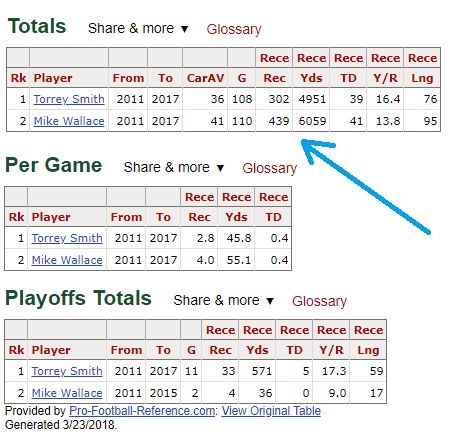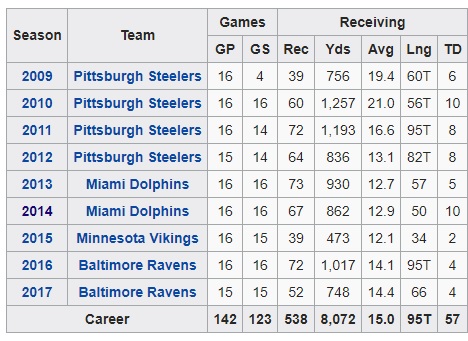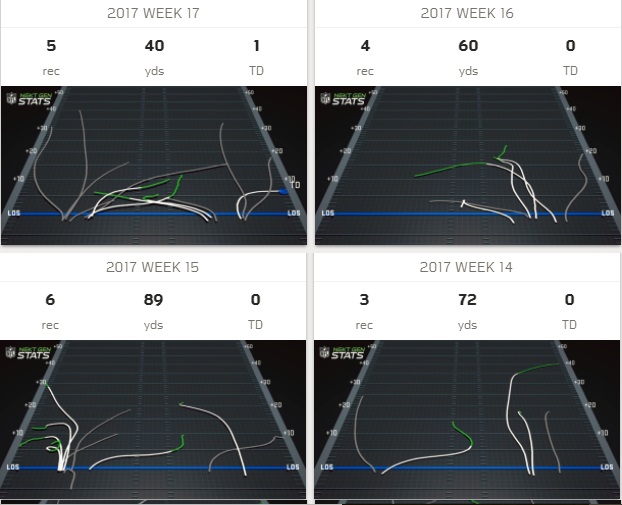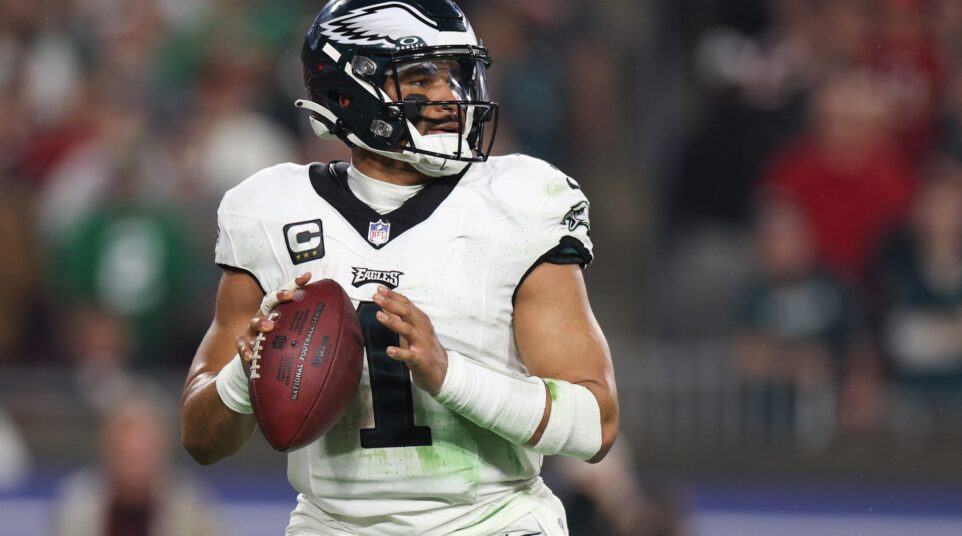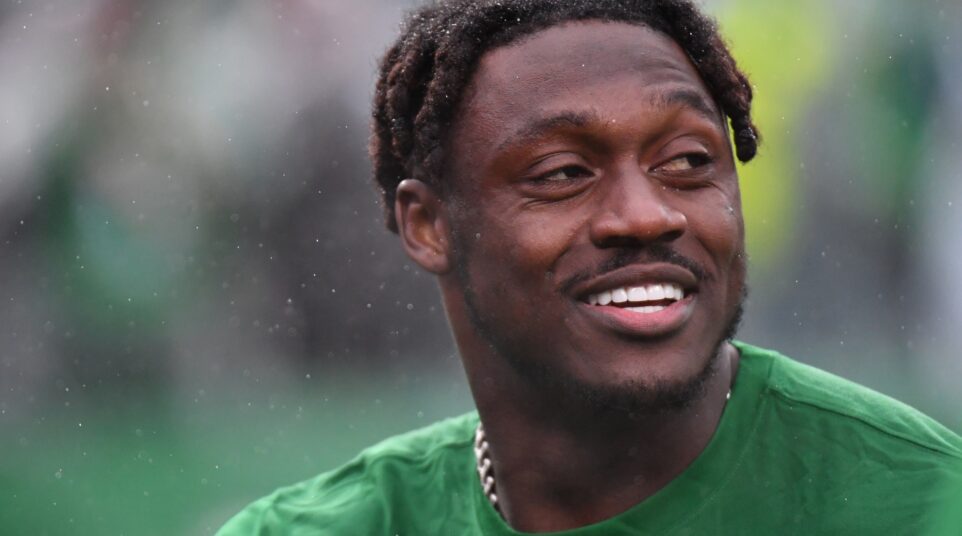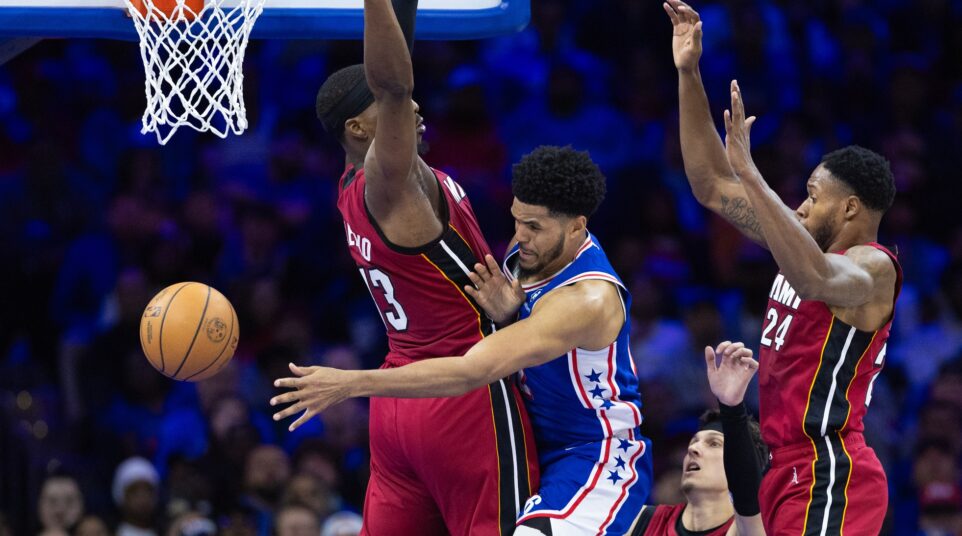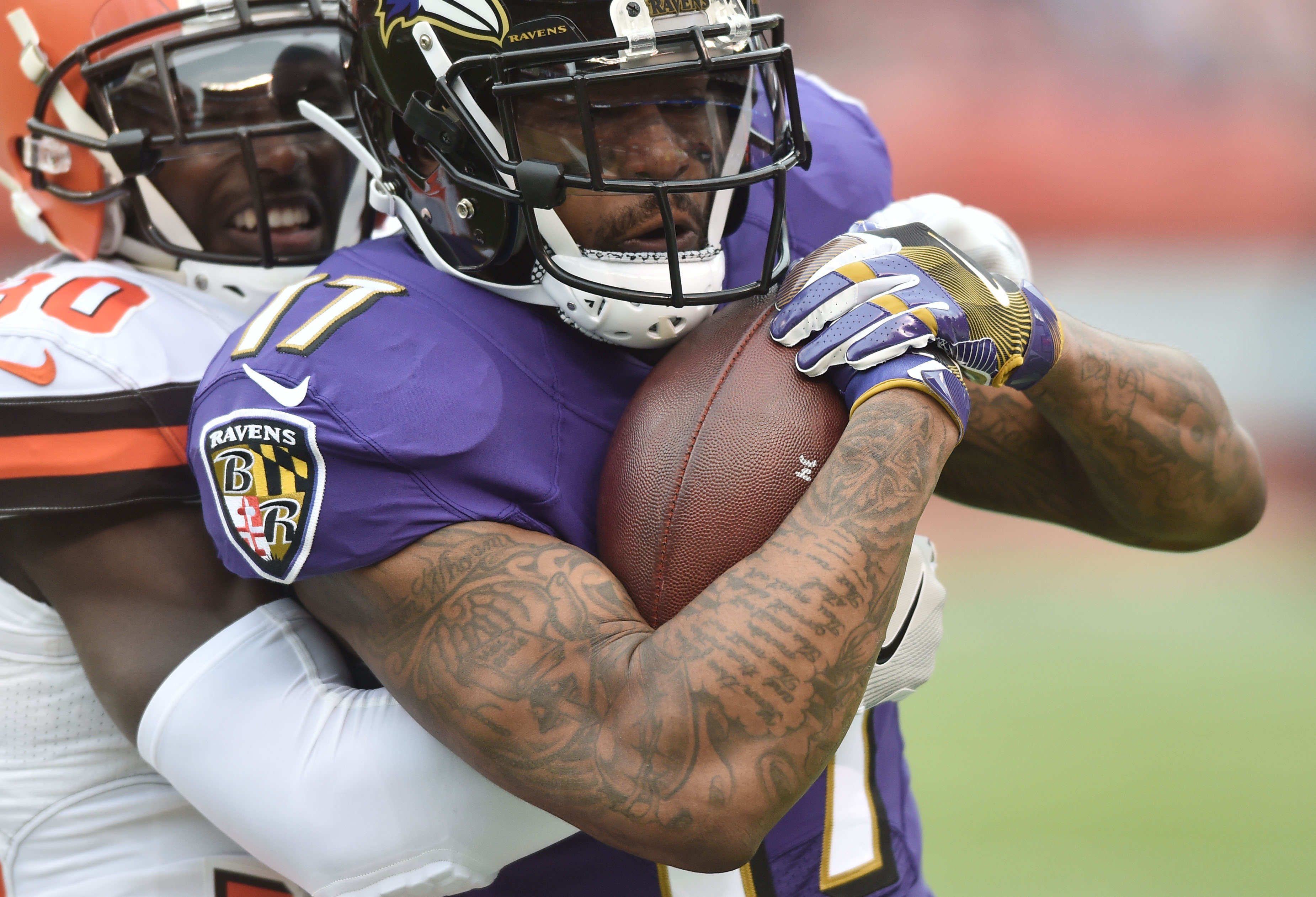
Is Mike Wallace an Improvement Over Torrey Smith?
In a word, yes, but that wouldn’t make for much of an article, would it?
The Eagles signed the veteran receiver to a one year deal reportedly worth $2.5 million as a replacement for the departed Smith, who was traded to Carolina little more than a week ago for cornerback Daryl Worley. Smith was due $5m this season and Worley is still on his rookie deal, so the Birds save a decent chunk of money with that pair of personnel moves.
Wallace is 31, so he’s played two more season than the 29 year old Smith.
His production is better overall, though, with career numbers that are much more favorable.
I went over to Pro Football Reference and ran the numbers from 2011 to 2017, which is the last seven years for each player. For Smith, that’s age 22 to age 28, and for Wallace it’s age 25 to 31 and removes his first two seasons. Even then, Wallace has better statistics across almost the entire board:
More receptions, more yards, more touchdowns, and better per game numbers, too.
The one edge Smith has on Wallace is his postseason production, with 11 games, 33 catches, 571 yards, 5 touchdowns, and, most importantly, two Super Bowl wins. Wallace has played a whopping two playoff games since 2011 and has caught a grand total of 4 balls for 36 yards.
His last meaningful playoff game was Super Bowl XLV, when he snagged 9 balls for 89 yards and a touchdown. In the Steelers’ two prior playoff games, he caught four for 26 yards.
So that’s a small wrinkle to consider – one excellent Super Bowl performance as an outlier for a quiet postseason history. But Wallace has really done well in the regular season, and he’s done it on some mediocre teams. He’s played five of the last six seasons on non-playoff squads while putting up these marks:
Wallace was the Ravens’ leading receiver in 2017 and 2016 and finished third behind Stefon Diggs and Kyle Rudolph during his single Minnesota season. His second Miami year also saw him finish 1st in receiving but that 930 yard campaign he had back in 2013 was second to Brian Hartline, so go figure.
Either way, Howie Roseman is essentially bringing in a WR1 as a WR3, a guy who will play alongside Alshon Jeffery and Nelson Agholor. I thought Mack Hollins might be the dude this year, especially since the Birds hired his former coach from North Carolina, but it looks like he’ll remain in the WR4 spot he occupied last year. Hollins caught 16 balls for 221 yards and touchdown in 2017.
Skill-wise, Wallace is the same type of deep threat as Smith, a guy who can… wait for it…. “take the top off” a defense:
https://twitter.com/RobHodge/status/976964369459314688
That’s one of my favorite football cliches. He can really “take the top off.”
Anyway, Wallace has a lot of big-play capability. He had 9 catches of 40 or more yards during his two seasons in Baltimore.
This was one of them:
https://twitter.com/NFL_DovKleiman/status/795340833734197248
YAC for days! I like that.
We know Torrey Smith had issues with drops early on last year, something he got better with as the season went along.
Wallace has made some contested catches despite being less of a possession-type receiver and more of a DeSean Jackson type. He finished with a catch percentage of 56.5 last year, grabbing 52 of 92 targets. Torrey caught 36 of 68 targets for a 52.9%.
Of course, that doesn’t consider how tight of windows your quarterback is throwing into:
Mike Wallace atrapando Touchdowns es como ver en un unicornio. https://t.co/4sAegHhFVA
— Pablo Soto (@RefrigeradorNFL) November 19, 2017
If you want to go a bit down the rabbit hole with advanced stats, TAY, or targeted air yards is a good place to start.
According to NFL.com, both Wallace and Smith finished with the exact same TAY number, 12.9, which is how many yards down the field they were thrown to on average. DeSean, for comparison, finished third in the NFL with a 15.8 in this category.
When you go to TAY%, you see the real difference. Smith logs a 16 and Wallace a 30, which is an indicator of how many of a team’s deep yards a player accounts for. Wallace was responsible for almost one-third of the Ravens’ downfield looks last season.
You can also look at the SEP number, or separation, but it doesn’t always tell a clear story. For example, Alshon Jeffery had a league-low SEP number of 1.8 this year, which means he got less than 2 yards of distance between himself and the nearest defender on average. That’s why a lot of his catches were contested. It could mean that he isn’t great at creating separation, or that the QB trusts him to make a play in a tight window, or even both of those things at the same time.
Smith finished with a 2.3 SEP, which isn’t amazing for a deep threat. Wallace had a 2.6, so he was better at creating distance, or just simply wasn’t targeted as much with defenders closer to him. Tyreek Hill logged a 3.5 here, near the top end.
You can see a little more when you look at the routes he ran this season. I clipped four of them from the Next Gen stats site:
Those are the patterns he ran during the last four weeks of the season. It’s similar for the other weeks, too, lots of deep stuff, flag and post routes, but some shallow crossing routes as well.
More or less, I think you’re getting a productive guy at a great price. Wallace is 31, so he’s a bit older than Smith, but the numbers speak for themselves, as does the eye test. I don’t doubt that he’ll be more effective in a Doug Pederson offense with Nick Foles and Carson Wentz throwing him the ball, versus whatever Baltimore was trying to do last year.
Smith was a good locker room guy who made some great postseason contributions, but I think everyone knew that a cap-tight team was going to move on from his $5 million salary.


